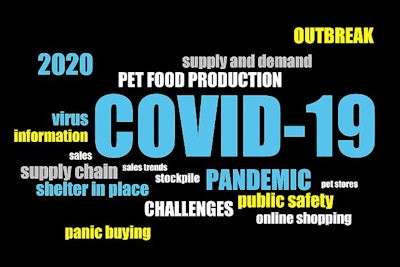
Four trends may influence dog, cat and other pet food companies for the remainder of 2020 and into the near future. Pet food market analysts with investment bank Cascadia Capital identified four key trends currently dominating the industry in the report “Pet Industry Overview: Spring 2020.”
-
COVID-19 pandemic effects persist
Beyond the early boost to pet food sales as people stocked up, the COVID-19 pandemic will probably continue to influence pet owners’ purchasing behavior. Cacadia’s analysts noted that product availability outweighs brand loyalty. Pet food companies need to ensure that consumers can either order products online for delivery or that pet foods and treats can be purchased in a low-contact means from physical locations. In the long term, the pandemic may push consumers further towards e-commerce, making that channel ever more vital for pet food companies.
-
Grain-free pet food declines
Before the pandemic, the pet food industry was already dealing with the effects of the U.S. Food and Drug Administration announcements about its investigation of correlations among canine dilated cardiomyopathy and certain grain-free dog foods. As dog owners reacted to the FDA, grain-free dog food sales declined in the United States, snapping a decade-long rise to prominence. In 2019, many pet food companies began offering grain-friendly dog foods using ancient grains. Cascadia analysts forecast that this trend will continue as the industry awaits federal guidance or updates.
-
Cost of business increases
Pet food companies used to be able to follow a consistent road map starting with independent pet specialty retailers and moving up to larger retailers, according to Cascadia’s analysts, but that model has broken down as the costs of doing business have gone up. Chain retailers now demand greater volume-based discounts and promotion dollars, as the retailers drive facings and trial with their market positions. Similarly, online retailers use pay-to-play systems that affects brands ability to succeed on those websites. Cascadia’s analysts suggested that innovation and branding may be the only bulwarks against retailers demands. Building relationships with consumers and using that to demonstrably drive sales may be crucial.
-
Consolidation changes
Pet food industry consolidation may continue, post-pandemic, but some features may change, according to Cascadia analysts. The benefits of scale may become more important as the economic repercussions of the pandemic persist. Publicly traded pet food companies may be hindered by stock volatility, and some may even consider selling assets. Private equity may continue to dominate the percentage of deal volume closed. Access to capital may become key to gaining an advantage in the market.


















